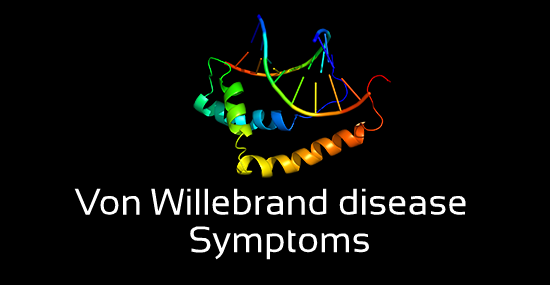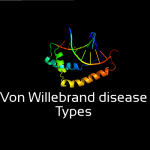VWD Symptoms
What are the symptoms of von willebrand disease?
Symptoms of VWD vary hugely from person to person and severity of symptoms can range from completely asymptomatic to mild symptoms, and thus it can be simply disregarded or accredited to other disorders. In most cases, symptoms of von willebrand disease occur commonly after a slight injury or trauma; However, infrequently, symptoms may occur spontaneously.
Women with von Willebrand disease may experience heavy, prolonged menstrual bleeding that may mimic symptoms of endometriosis.
- VWD in Women
- VWD in Men
What are the symptoms of vwd in women?
Symptoms of VWD in women and men:
While we have several types of bleeding disorders that do affect women, von Willebrand disease (VWD) is one of the most, if not the most common type, affecting up to 1.8 million American women 2013.
Men and women with bleeding disorders can experience many common signs and symptoms, as bleeding disorders share many common signs and symptoms among both men and women, some of these include:
- Frequent nosebleeds
- Easy bruising
- Bleeding from the digestive / urinary tract
- Excessive bleeding from the mouth / gums
- Excessive bleeding after tooth extraction
- Abnormal bleeding after dental or medical procedures
- Abnormal bleeding from minor injuries
- Bleeding after taking NSAIDs (nonsteroidal anti-inflammatory drugs), such as aspirin, ibuprofen (Advil, Motrin, Nuprin), and naproxen (Aleve).
Bleeding disorders may affect about 10% of women with menorrhagia or heavy periods
What is the main symptom of VWD in women?
The main symptom of VWD in women
Menorrhagia or prolonged and heavy menstrual bleeding that lasts about 5 to 6 days is one of the earliest symptoms of vwd in women
How is menorrhagia suspected?
Menorrhagia is characterized by:
- Excessive heavy bleeding with big clots (usually larger than an inch in diameter)
- Anemia (hemolytic due to loss of blood)
- Low iron levels (iron deficiency)
Menorrhagia can lead to serious complications. If you think you have menorrhagia due to VWD, contact your gynecologist immediately.
VWD obstetric and gynecologic complications in adult women.
The severity of symptoms of the disease depends on which type of VWD you have. Most individuals with von Willebrand disease types 1 or 2 are either asymptomatic or they may show mild symptoms that mimic other conditions. In most cases, VWD types 1 or 2 may not be diagnosed until the person has experienced an episode of heavy bleeding. However, if you have type 3 VWD, you may have any of the symptoms listed above in addition to the following symptoms:
Severe life threatening bleeding episodes that occur occur without apparent physical cause. Without prompt immediate treatment, it can be lethal.
Severe pain and swelling of organs due to internal bleeding into the joints, muscles, and soft tissue
It’s really important to get tested if you have symptoms of VWD.
People with VWD need special medicine to control bleeding. In most cases, patients with VWD develop abnormal bleeding from minor injuries
Women with type 3 VWD are at an increased risk of developing hemorrhagic ovarian cysts, and possibly endometriosis.
Diagnosis and Treatment
How to diagnose VWD?
It is difficult to definitively diagnose VWD based on bleeding symptoms. That require differential diagnose & comparison of cases to other possible causes.
You need to see your doctor (a hematologist) if you think you have VWD. To find out whether you have VWD, your doctor may recommend one or more blood tests to diagnose von Willebrand disease. Blood tests measure the following three substances: your blood levels of von Willebrand factor, PT (prothrombin Time), and Factor VIII to find out whether you have von Willebrand disease.
How to treat women with VWD who have heavy menstrual bleeding?
Treatment options for women who have von Willebrand disease with menorrhagia (heavy menstrual bleeding) include:
- Combined oral contraceptives (birth and infection control pills)
- Levonorgestrel intrauterine device (IUD)
- Antifibrinolytic drugs
- Desmopressin (DDAVP)
- Factor replacement therapies, Humate-P®.
Humate-P® is the only VWF concentrate approved in the USA for the treatment of all three main types of von Willebrand disease. Moreover, is used to to stop and prevent bleeds in individuals with the following conditions or disorders:
- Hemophilia A
- Trauma induced bleeding episodes in people with VWD
- Prevents excessive bleeding during / after surgery in patients with VWD
Pregnancy and VWD
Pregnancy in women with VWD requires specialized and individualized care, as they may face several haemostatic challenges during pregnancy and childbirth, both the pre-and postnatal care for the woman and her fetus are required to reduce the risk of bleeding complications during pregnancy and delivery
Read more
What is von willebrand disease?
What are the different types of von willebrand disease?
How to treat Von Willebrand Disease?
References
Verified by: Dr.Diab (November 6, 2017)
Citation: Dr.Diab. (November 6, 2017). What are the symptoms of von willebrand disease. Medcoi Journal of Medicine, 11(2). urn:medcoi:article2457.














There are no comments yet
Or use one of these social networks